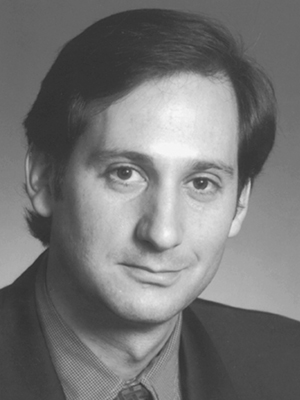Earlier this month, Jonathan Lisus, a 45-year-old partner at McCarthy Tétrault LLP’s Toronto office, rocked Bay Street with the news that he was leaving one of Canada’s largest firms to join the 11-lawyer litigation boutique Lax O’Sullivan Scott LLP.

Indeed, the move may be transformational for the next generation of litigators.
“Jonathan is the first real established star of his generation to make this kind of move from a major firm to a litigation boutique,” says one veteran Toronto lawyer who’s a partner at a national firm.
“It has certainly gone like wildfire through the litigation bar.” Lisus, who has spent his entire career at McCarthys since he articled there in 1990, says he has no regrets about his tenure at one of Canada’s most venerable firms.
“I hold McCarthys in the highest regard, have many friends and mentors there, and believe its litigation platform is absolutely first-rate,” he tells Law Times. “The move had absolutely nothing to do with frustration or unhappiness.”
Instead, he says his decision was a highly personal one and notes that McCarthys is a “valued client” of Lax O’Sullivan, a firm that relies heavily on referrals from other lawyers.
“This move is very much an age-and-stage thing that morphed with an unexpected opportunity that arose this summer to work with a talented group of counsel intent on transitioning their excellent chambers into the next generation and building on what the founders created.”
Lisus doesn’t deny that an inner restlessness was at work. “After 20 years in one chair, the question for me was whether I would be in that chair for another 20 years,” he says. “As you age and grow, your ambitions, aspirations, and what motivates you change.”
With Lax O’Sullivan name partners Clifford Lax, Terry O’Sullivan, and Charles Scott all beyond 60 years of age, Lisus relishes the challenge of transition at the firm, which is now renamed Lax O’Sullivan Scott Lisus LLP.
“The opportunity to build something out from a great platform with the next generation and the opportunity to pursue different kinds of work, such as plaintiff’s commercial litigation and more public law, were very appealing to me,” Lisus says.
“The firm is really open to these ideas and to the idea of expansion.”
While Lax O’Sullivan, founded in 1997, has remained relatively small, Lisus says the firm is amenable to adapting to the type of work it will attract in the future.
“I haven’t developed a sense of Lax O’Sullivan’s surge capacity. We’ll expand, I imagine, if we develop the type of litigation that needs a lot of bodies, that needs e-discovery capacity and extensive document management, and that features litigation against the big firms.”
The basic demographics of the profession, Lisus says, are driving a cyclical generational transition.
“You basically saw a cycle in the ’90s when Lenczner Slaght emerged in 1992; Lax O’Sullivan came along in 1997; and Paliare Roland was established soon after the turn of the century,” he notes.
“Now the demographics have the top guys in their 60s and 70s and the next band of leaders starting to emerge.”
Also driving the cycle is the trend to youthfulness in the business community. “The profession and the litigation bar are at a turning point,” Lisus says.
“Nowadays, buyers of legal services at banks and corporations are in their 40s, and the profession is taking a new look at bringing younger people up the hierarchy.”
At McCarthys, Lisus notes, chairman and CEO Marc-André Blanchard of Montreal is just 45, as is Paul Boniferro, the firm’s Toronto-based national leader of practices and people.
Lenczner Slaght Royce Smith Griffin LLP’s Alan Lenczner, who spearheaded the litigation boutique phenomenon when he and four other top litigators at McCarthys left to form their own firm in 1992, isn’t surprised at Lisus’ move.
“The firms are getting bigger; litigation departments are getting bigger; and conflicts are more problematic than ever,” he says. “When you put that together with the fact that just about everyone has a drive for change in mid-career, you’re going to get movement, even among the top people.
But I don’t think it will be anything resembling a stampede because a lot of people gravitate to other things, like fast cars and fast women. For my part, I couldn’t afford the cars, and the women wouldn’t look at me.”
Lisus believes change will affect not only the big firms but the larger boutiques as well.
“As the boutiques grow, they’ll have to regenerate and reconfigure,” he says.
Still, he acknowledges that the move from a national firm will have its challenges. “The adjustment from aircraft carrier to torpedo boat is a big one,” he says.

 Indeed, the move may be transformational for the next generation of litigators.
Indeed, the move may be transformational for the next generation of litigators.